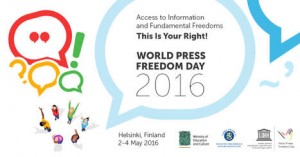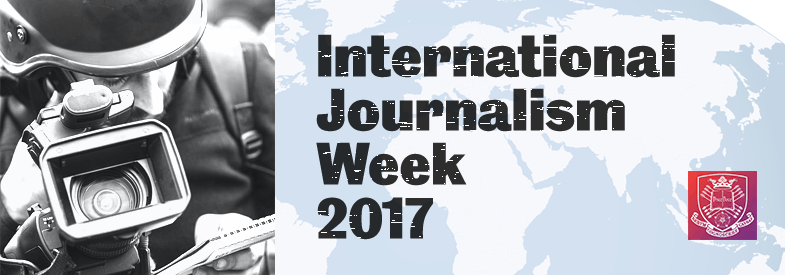 According to UNESCO, at least 800 journalists and media producers have been killed between 2006 and 2016. This threat to the physical safety and security of journalists, their families and their media is the most direct threat to media freedom. Journalists need to be recognised and protected as vital to one of our most fundamental form of human rights, free speech. Without a free press we cannot hold the powerful accountable for human rights abuses. A free media is necessary for all free people. The killing of journalists is one of the the most fundamental threats to freedom. It is the most essential method of censorship.
According to UNESCO, at least 800 journalists and media producers have been killed between 2006 and 2016. This threat to the physical safety and security of journalists, their families and their media is the most direct threat to media freedom. Journalists need to be recognised and protected as vital to one of our most fundamental form of human rights, free speech. Without a free press we cannot hold the powerful accountable for human rights abuses. A free media is necessary for all free people. The killing of journalists is one of the the most fundamental threats to freedom. It is the most essential method of censorship.
The new media platforms of the modern age means that there are now thousands of citizen journalists. These new journalists must be recognised and protected with the same rights as those who received traditional training.
The safety of journalists is becoming a global priority. The UN has released a plan of action encouraging collaborations to share skills and build systems of safety together. CFOM supported this plan by working together with UNESCO and other like-minded organisations to coordinate the 3-4th May Helsinki events for World Press Freedom Day.
Our International Director, William Horsley, represented us at the main international conference marking World Press Freedom Day in Helsinki, hosted by UNESCO and the government of Finland, being held at the same time.
The research conference was organised by UNESCO and the UNESCO Chair at University of Gothenburg in collaboration with IAMCR, University of Sheffield, University of Helsinki and University of Tampere.
At the research conference 18 papers were delivered, including one by our Journalism Safety Research Network (JSRN) member Omar Al-Ghazzi, and 14 posters were presented at the conference, all on the topic of Journalistic safety. There were also keynote speeches and two panel discussions on the conference theme.
Our Chair, Jackie Harrison chaired one of the paper sessions. Jackie was also involved in the second and closing panel, Conclusion and Way Forward, that took place on the 4th. Our Chair was asked to deliver the closing keynote speech. She used this space to explain the possibilities for future cooperation and collaboration and to reflect on the existing research and the conference as a whole.
This provides an excellent forum to meet with and hear from scholars who are researching the constraints on media freedom in all their complexity and I hope it provides us with new opportunities for future collaborations.
Omar Al-Ghazzi, one of our researcher team, presented his paper entitled Amateur Journalism in Syria and the Silent Slaughter of Raqqa. Omar’s paper focuses on the increasing importance of citizen journalists and their vital role in reporting global atrocities. As modern technology allows for anyone to record what they see, it is becoming increasingly vital that we find ways to protect these vulnerable reporters
Our part in the organisation of the event was led by Sara Torsner. Sara worked in partnership with UNESCO thanks to the ESRC Collaborative Studentship fund. She was involved in the coordination team for the event whilst undertaking fieldwork in Paris as an intern at UNESCO. She was a part of both the UNESCO and Sheffield team and will attend and run the conference.
Despite the serious threats facing journalists around the world, it is interesting to see that the issue of the safety of journalists is increasingly gaining attention. Not least following the work to implement the UN Plan of Action on the Safety of Journalists and the Issue of Impunity. Another more recent development is the acknowledgement of the press freedom dimension of sustainable development. The potential inclusion of threats against journalists as an indicator for assessing progress on the Sustainable Development Goal concerning access to information is one of the aspects I look forward to hearing more about during the WPFD conference. I’m also very interested to learn more about what academic research is being done on the issue of the safety of journalists and I hope to get some input for my own research on how to measure various kinds of threats to journalists.”


